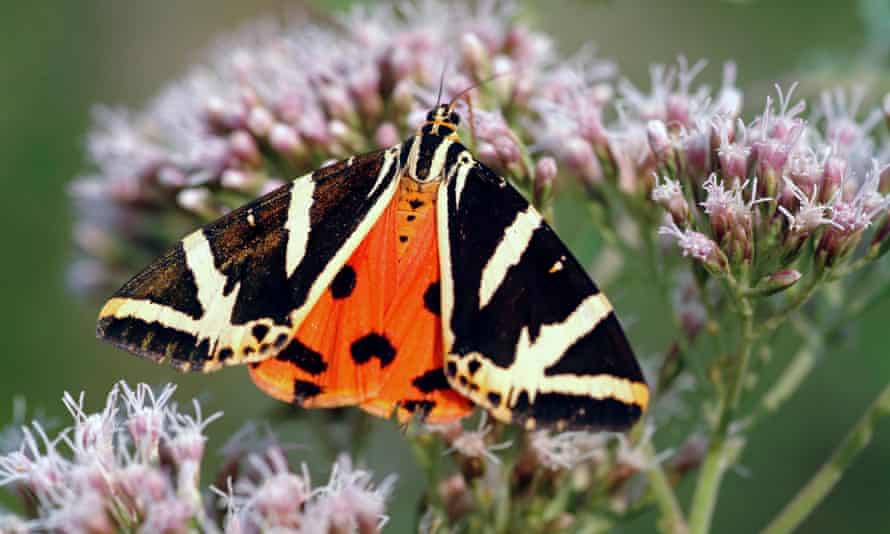Country diary: a moth that has thrived despite a cold summer
Langstone, Hampshire: the Jersey tiger has dramatically expanded its natural range and is now well established

This summer’s unseasonably cool weather has been bad news for butterflies and moths, but some species are efficient heat-seekers, well adapted to tackling the thermal challenge. I’ve grown used to finding peacock and red admiral butterflies adorning the bonnet of my car, like decorative decals. As heliotherms, they use solar radiation to regulate their body temperature, sunbathing with their wings held wide open for maximum exposure – behaviour known as dorsal basking. By pressing their bodies against the sun-warmed black metal, they also display thigmothermic behaviour, absorbing conducted heat.
One overcast morning, I found the bonnet bare, but my attention was drawn to a flash of vermilion down by the bumper. Tucked in by one of the front fog lights, was a Jersey tiger moth (Euplagia quadripunctaria). As it settled, it closed its forewings, displaying the bold black and cream markings that give the species its name, though to my eye the pattern is more reminiscent of zebra stripes than tiger. The moth was seeking refuge rather than warmth, the dark paintwork providing the perfect background substrate to camouflage against.
Our changing climate has affected many species of moth. The closely related garden tiger (Arctia caja) has suffered an alarming decline, with numbers plummeting by 92% over 40 years. However, the Jersey tiger has enjoyed vastly different fortunes. First recorded as a migrant on the Isle of Wight in 1935, it has dramatically expanded its natural range and is now well established along the south coasts of England and Wales. Increasingly sighted inland, with a growing population in London, and records from farther north, this day-flyer appeared on Butterfly Conservation’s Big Butterfly Count identification chart for the first time this year.
Disturbed by my neighbour’s cat sniffing around its resting place, the moth began to shiver. The vigorous vibration of its wings created heat by friction, warming its flight muscles. Fluttering weakly, it took to the air in search of shelter, but as the sun slipped out from behind the clouds, it had a change of heart and headed for a nearby buddleia.